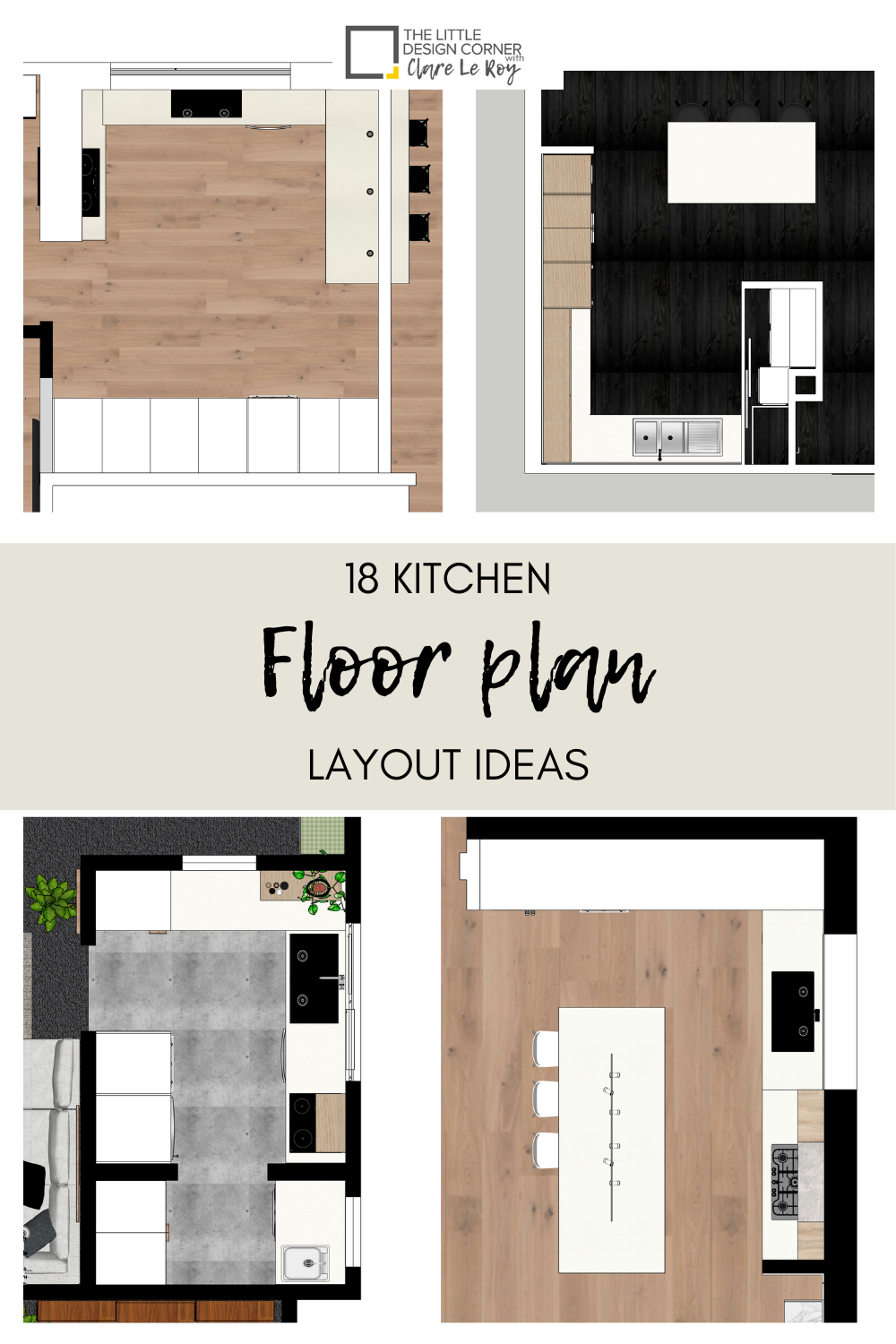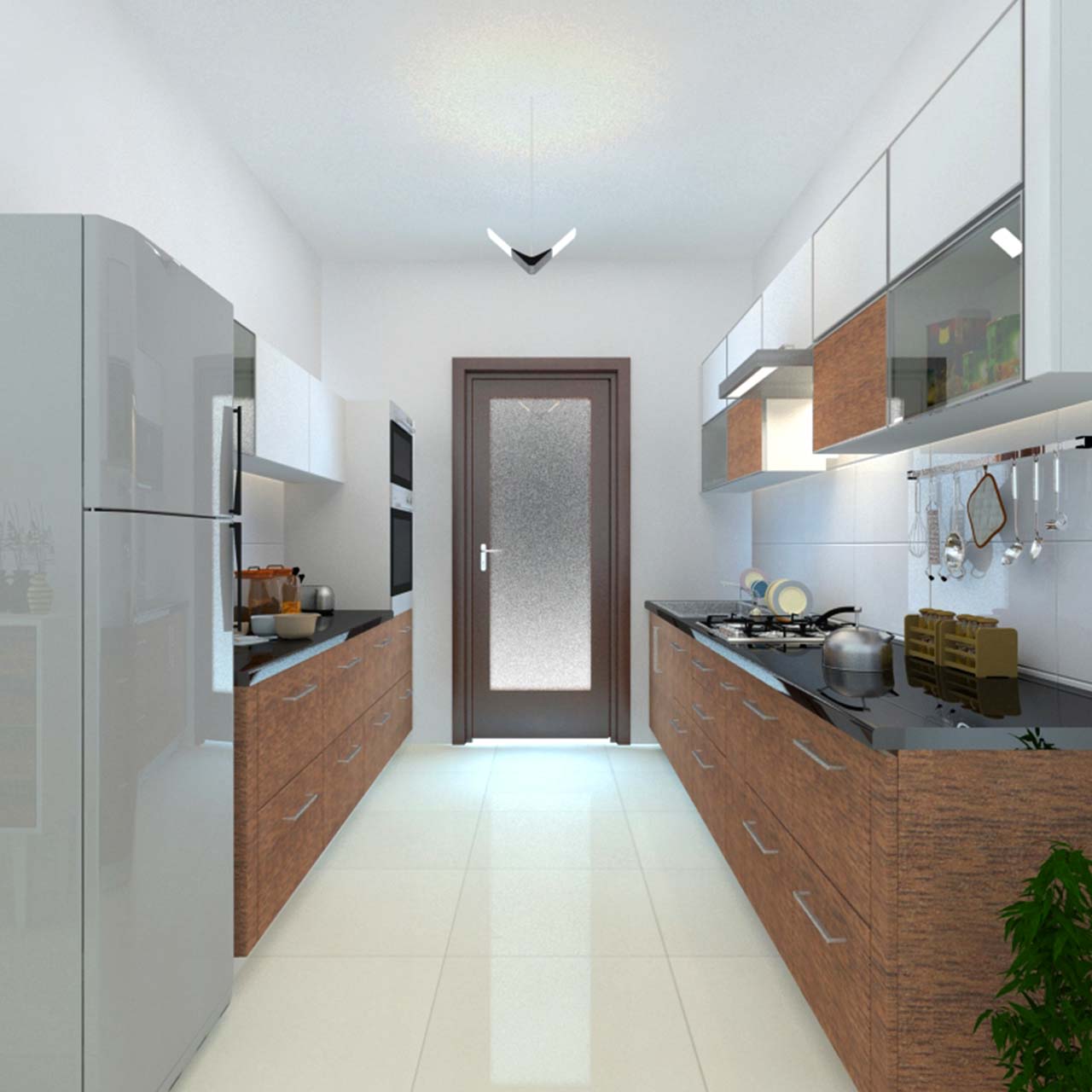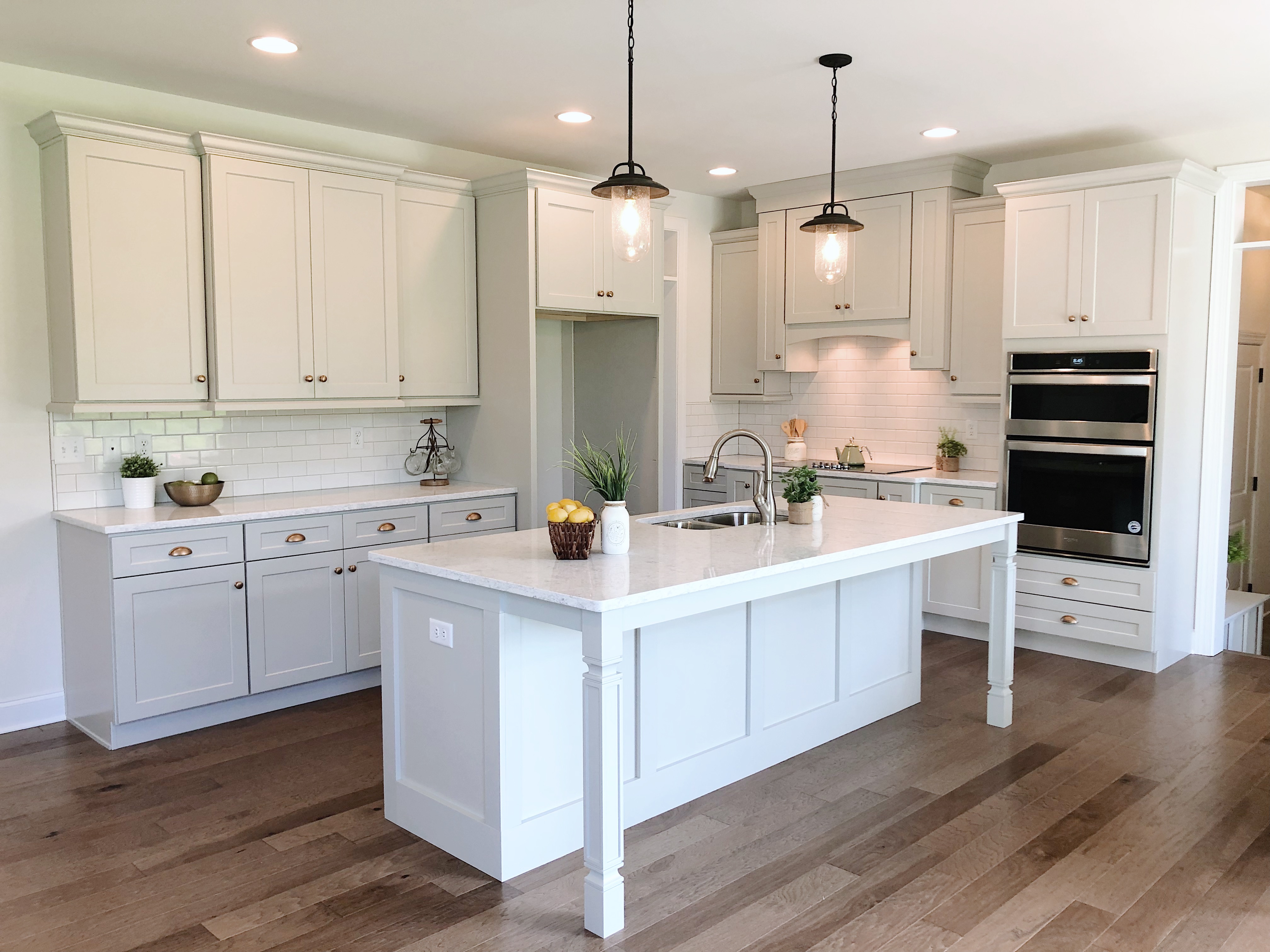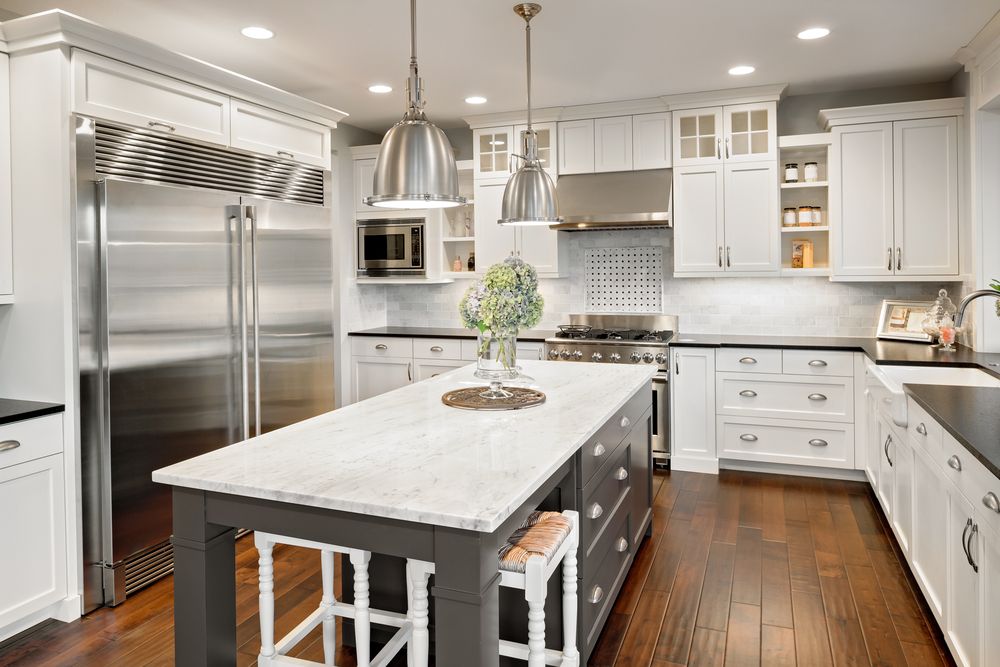Kitchen Layout Hacks: Small Space, Big Style
Kitchen Layout Hacks: Small Space, Big Style
A small kitchen doesn't have to mean a cramped, dysfunctional space. With a little creativity and planning, you can maximize every inch of your kitchen to create a functional and stylish haven that you'll love spending time in.
This guide will delve into practical tips and inspiring ideas for optimizing a small kitchen layout. From clever storage solutions to smart appliance choices, we'll cover everything you need to transform your kitchen into a space that's both efficient and aesthetically pleasing.
Embrace the Power of Open Layout
An open layout is a game-changer for small kitchens. It visually expands the space, making it feel larger and more inviting.
- Consider removing walls or creating an open concept design to connect the kitchen with the dining area or living room. This visual continuity creates an illusion of space and allows natural light to flow freely.
- Use a breakfast bar or island as a dividing element. This creates a designated cooking and prep area while still maintaining a sense of openness.
Strategize Your Work Triangle
The work triangle is a fundamental principle of kitchen design. It refers to the arrangement of the three primary work zones: sink, stove, and refrigerator. Ideally, the distance between these zones should be between 4 and 7 feet to ensure efficient workflow.

- In a small kitchen, it's crucial to create a compact work triangle. This may involve strategically placing appliances or using a peninsula instead of a full island.
- Think about the flow of movement. The work triangle should encourage a natural and seamless movement between these three zones.
Maximize Vertical Space
Vertical storage is your best friend in a small kitchen. Instead of spreading your belongings across countertops and floor space, utilize the vertical dimension to create ample storage.
.png)
- Install open shelving. This allows you to showcase your favorite dishes and kitchenware while freeing up precious counter space. Opt for a mix of closed and open shelving to create visual interest and maintain organization.
- Consider a tall pantry cabinet. This can store bulk items, appliances, and seasonal items, keeping them out of sight and freeing up valuable space.
- Integrate wall-mounted organizers. Magnetic spice racks, hooks for utensils, and wall-mounted shelves can all be used to efficiently store items and keep countertops clear.
Choose the Right Appliances
Appliance choice plays a significant role in optimizing your kitchen layout.

- Downsize your appliances. Consider a compact refrigerator or a slim-line dishwasher to save valuable space.
- Invest in multi-functional appliances. Look for appliances that serve multiple purposes, like a microwave oven with a built-in air fryer or a countertop oven that doubles as a toaster.
- Consider a smaller sink. A compact sink can free up counter space while still being functional.
- Opt for under-cabinet appliances. This minimizes clutter on countertops and frees up valuable surface area.
Lighten Up the Space
Good lighting is essential in any kitchen, especially a small one. Proper lighting can brighten the space, enhance its ambiance, and make it feel more inviting.
- Use a mix of natural and artificial light. Maximize natural light by keeping windows uncovered and using light-colored blinds. Supplement natural light with overhead and task lighting.
- Install under-cabinet lighting. This provides focused task lighting for prepping and cooking, creating a warm and inviting ambiance.
- Consider a pendant light over the island or breakfast bar. This adds a touch of style and provides focused lighting for dining or social gatherings.
Create a Sense of Depth
A small kitchen can feel claustrophobic without the right design elements. To create a sense of depth and visual interest, experiment with the following techniques:

- Use contrasting colors. A darker wall color can make a small space appear larger, while light-colored cabinets and countertops will help to create a sense of openness.
- Incorporate mirrors. Mirrors reflect light, creating a sense of depth and making the space appear larger. Place a mirror on a wall opposite a window to amplify natural light.
- Use furniture with legs. Furniture with legs will make the room feel more open and spacious.
- Keep the floor space clear. Avoid clutter on the floor by storing items off the ground using shelves, baskets, or cabinets.
Smart Storage Solutions
Efficient storage is critical in a small kitchen. Every inch of space can be optimized to maximize functionality and minimize clutter.

- Utilize drawers. Drawers provide a highly organized way to store kitchen essentials. Consider adding dividers and organizers to create dedicated compartments for different items.
- Embrace corner cabinets. Corner cabinets are often overlooked but can be highly efficient for storing pots, pans, and other bulky items.
- Install pull-out shelves. These make it easy to access items in deep cabinets, eliminating the need to dig through the back of the cabinet.
- Hang up your utensils. Use a magnetic strip or a utensil holder to keep frequently used tools within reach.
Embrace Minimalism
A minimalist approach to kitchen design can be incredibly beneficial in a small space.
- Keep surfaces clear. Avoid overcrowding countertops with unnecessary items.
- Choose a simple color palette. Use neutral colors and avoid bold patterns that can make the space feel smaller.
- Limit decorative elements. Choose a few key pieces that add visual interest without overwhelming the space.
Choose the Right Furniture
Furniture choices can make a big impact in a small kitchen.
- Select a table that can double as a counter. A drop-leaf table or a bar-height table can provide extra seating and work space when needed.
- Choose a smaller sofa. If you have space for a sofa, opt for a compact model with a narrow footprint.
- Use bar stools instead of chairs. Bar stools take up less space and can easily be tucked under the counter when not in use.
Don't Forget the Details
Small details can make a big difference in the overall feel of your kitchen.

- Use decorative hooks. Hooks can be used to hang utensils, towels, or even mugs.
- Incorporate plants. Plants add a touch of nature and life to the space. Choose low-maintenance options that thrive in indoor conditions.
- Add a rug. A rug can define a seating area or add a touch of personality to the space.
- Invest in a stylish backsplash. A backsplash can add a pop of color and texture to the kitchen.
Embrace the Challenge
Designing a small kitchen layout can be a rewarding challenge. With careful planning, smart storage solutions, and an eye for detail, you can create a beautiful and functional kitchen that you'll love for years to come.
Remember, the key is to focus on maximizing space, creating a clear workflow, and incorporating elements that make the space feel open and inviting. By applying these principles and embracing a little creativity, you can transform your small kitchen into a culinary haven that's both stylish and practical.
Kitchen Layout: From Chaos to Culinary Dreams ✨
The heart of any home, the kitchen is where meals are made, memories are forged, and laughter echoes. But a well-functioning kitchen is more than just a space to cook – it's a symphony of layout, functionality, and aesthetics that orchestrate a seamless culinary experience. A well-designed kitchen layout can transform a chaotic space into a culinary haven, making cooking a pleasure and entertaining a breeze.
This comprehensive guide delves into the intricacies of kitchen layout, providing you with the knowledge and inspiration to design a kitchen that elevates your culinary journey.
Understanding the Basics: Kitchen Layouts Explained
Before we dive into specific designs, let's understand the fundamental kitchen layouts that form the foundation of your culinary space:
-
Galley Kitchen: This layout, characterized by parallel countertops and cabinets on opposite sides of the room, is ideal for smaller spaces, maximizing efficiency and storage. It's a popular choice for apartments and smaller homes, offering a streamlined workspace.
-
L-Shaped Kitchen: This versatile layout utilizes two walls to form an L-shape, creating a natural flow and ample workspace. It's adaptable to various sizes and can accommodate a large kitchen island or peninsula for additional prep space and seating.
-
U-Shaped Kitchen: This enclosed layout, resembling the letter U, offers the most comprehensive workspace with countertops and cabinets on three sides. It's a popular choice for larger kitchens, providing abundant storage and a dedicated workspace.
-
G-Shaped Kitchen: This layout adds a fourth side to the U-shaped design, creating an even more enclosed and efficient workspace. It's ideal for larger kitchens where ample prep space and storage are desired.
-
Island Kitchen: A focal point in open-plan homes, the island kitchen features a freestanding countertop and cabinet space, offering additional workspace, storage, and seating. It creates a sense of openness while still maintaining a defined cooking area.
Beyond the Basics: Enhancing Functionality with Specialized Design Elements
Once you've chosen a basic layout, you can customize it with specialized design elements to enhance functionality and personalize your kitchen. Here are some key considerations:
1. Work Triangle: The Foundation of Efficiency
The work triangle, connecting the sink, refrigerator, and cooktop, is the cornerstone of kitchen design. An optimal work triangle should be between 4 and 7 feet in length for each side, allowing for easy movement and efficient workflow. Avoid placing obstacles like furniture or islands within this triangle, ensuring unimpeded movement between key areas.
2. The Power of Appliances: Placement and Integration
Appliances, like the heart of the kitchen, require careful placement and integration for optimal functionality.
- Refrigerator: Ideally, the refrigerator should be placed on the outer edge of the work triangle, allowing for easy access and reducing clutter. Consider a built-in refrigerator for seamless integration into your cabinetry.
- Cooktop: The cooktop should be located within the work triangle, easily accessible from the sink and refrigerator. Consider a built-in cooktop for a sleek and integrated look.
- Oven: The oven can be placed beneath the cooktop or integrated into a dedicated cabinet. Consider a double oven for increased capacity, especially if you're a frequent baker.
- Dishwasher: Position the dishwasher near the sink for ease of loading and unloading. For optimal efficiency, consider a dishwasher that has a built-in water softener to prevent mineral buildup.
3. Lighting: Illuminating the Kitchen's Heart
Lighting plays a crucial role in creating a functional and inviting kitchen. Here's how to maximize the power of light:

- Task Lighting: Ensure adequate task lighting over the sink, cooktop, and prep areas. Consider under-cabinet lighting for focused illumination and ambient lighting for a warm and inviting atmosphere.
- Ambient Lighting: Overhead lighting provides general illumination for the entire kitchen. Recessed lighting, pendant lights, or chandeliers can add ambiance and style.
- Accent Lighting: Use accent lighting to highlight features like backsplashes, cabinets, or open shelving. This adds depth and interest to your kitchen space.
4. Storage: Maximizing Every Inch
A well-organized kitchen is a joy to cook in. Maximize storage space with thoughtful design elements:
.png)
- Cabinetry: Consider using a mix of upper and lower cabinets, drawer systems, and open shelving for efficient organization. Maximize storage space with pull-out shelves, lazy Susans, and vertical organizers.
- Pantry: A pantry is a valuable asset in any kitchen, providing dedicated storage for dry goods, canned foods, and cookware. Consider a walk-in pantry for maximum storage capacity.
- Island or Peninsula: Incorporate shelves or drawers into your island or peninsula to create additional storage for frequently used items.
5. Backsplash: A Splash of Personality
The backsplash serves as both a functional and aesthetic element. Consider materials like tile, natural stone, metal, or glass for a unique touch. Choose a backsplash that complements your overall kitchen design and personal style.

6. Flooring: A Foundation for Style and Durability
Choose flooring that is both aesthetically pleasing and durable. Materials like hardwood, tile, or laminate offer durability and easy maintenance. Consider incorporating a rug to define a specific area or add a splash of color.
7. Countertops: The Heart of the Kitchen
Countertops play a central role in kitchen design, offering a durable and functional workspace. Consider materials like granite, quartz, marble, laminate, or butcher block. Choose a material that complements your style and meets your budget.
Designing Your Dream Kitchen: A Step-by-Step Guide
Now that you understand the fundamentals of kitchen layout, let's move on to designing your dream kitchen. Here's a step-by-step guide:

1. Define Your Needs and Style:
- Cooking Style: Are you a casual cook or a culinary enthusiast? Your cooking style will influence the design elements you choose. For example, if you love to entertain, you'll need more counter space and seating.
- Lifestyle: Consider your family's needs and daily routines. A busy family might prefer a more streamlined layout, while a single person might appreciate a more compact design.
- Budget: Set a realistic budget for your kitchen remodel. Factor in the cost of appliances, cabinets, countertops, flooring, and labor.
- Style: Do you prefer a modern, traditional, farmhouse, or contemporary style? Choose elements that complement your desired aesthetic.
2. Measure Your Space:

Accurately measure your kitchen space, including the dimensions of walls, windows, doors, and existing appliances. This information will help you plan the layout and determine the size of your kitchen elements.
3. Choose a Layout:
Based on your space and needs, select a basic layout that fits your kitchen. Consider the advantages and disadvantages of each layout to determine the best fit for your needs.
4. Create a Floor Plan:
Sketch a floor plan of your kitchen, including the location of existing walls, doors, and windows. Mark the placement of appliances, cabinets, and countertops.
5. Develop a Design Concept:
Once you have a basic layout, begin developing your design concept. Consider the colors, materials, finishes, and fixtures that you want to use. Look for inspiration in magazines, websites, and design books.
6. Seek Professional Help:
Consider consulting a kitchen designer or contractor for expert guidance and assistance in creating your dream kitchen. A professional can help you with the layout, material selection, and installation process.

7. Consider Energy Efficiency:
As you design your kitchen, choose energy-efficient appliances, lighting, and fixtures. These choices can save you money on your energy bills and reduce your environmental impact.
Kitchen Layout: A Journey of Transformation
Designing a kitchen layout is a journey of transformation, taking you from a space filled with potential to a culinary haven. By understanding the fundamentals of layout, incorporating functional design elements, and following a structured approach, you can create a kitchen that reflects your personal style and enhances your culinary experience. Remember, a well-designed kitchen is a testament to your creativity and a space that invites you to cook, create, and connect with your loved ones.
